Phil and Penny Knight Campus for Accelerating Scientific Impact at University of Oregon // Ennead Architects
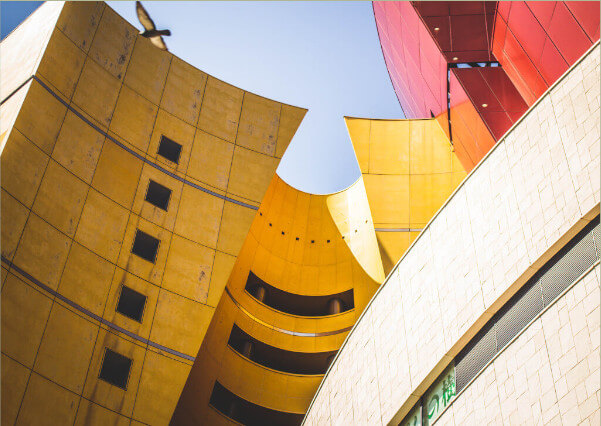
Project Status: BuiltYear: 2020Size: 100,000 sqft – 300,000 sqft
Text description provided by the architects.
How can architecture encourage a community of researchers to perform at their best?
The Knight Campus’ transformative, human-centered design supports researchers as they advance the initiative’s mission to shorten the timeline between discovery, development, and deployment of innovations with a positive societal impact. Taking inspiration from the region’s landscape and its interdisciplinary cultural ethos, the building’s architecture reinforces wellness, community, and expresses a human connection to nature.The Knight Campus was designed to allow researchers and students to perform at their very best.
© Ennead Architects
In support of this goal, the project includes a robust wellness program that focuses on occupant health, happiness, connections to nature, and promotion of a positive work-life balance. A common wellness area comprised of lockers, shower rooms, and changing areas encourages researchers to bike to work and to take advantage of the local landscape by jogging and hiking during break periods, and supporting programs like ‘run with a researcher’.
Within the building, the Knight Campus endeavors to maintain connections to nature through access to stunning views, and direct connections to intimate riparian environments including a light-filled courtyard environment where users can relax and socialize, and elevated pathways and gathering spaces along a restored campus wetland environment – ‘the millrace’.
© Ennead Architects
Locally sourced natural wood products are used throughout to reduce the project’s carbon impact. For a portion of its structure, the building utilizes sustainable cross-laminated timber (CLT), which is a beautiful and locally sourced low-carbon footprint material.
Daylight is a wellness commodity that is driven throughout the building: every regularly occupied workspace is organized to have direct access to light and views.
© Ennead Architects
Narrow floorplates and high floor-to-floor heights ensure equitable access to light and reduce the need for artificial light during daytime hours. The buildings’ double wall facade provides shade and glare control for the research spaces inside and creates immersive views into the surrounding landscape.The Knight Campus was envisioned to be uniquely Oregonian.
© Ennead Architects
Being Oregonian hearkens back to the spirit of pioneers of the Oregon Trail, to the entrepreneurial legacy of Phil and Penny Knight, and to the very landscape of this great state. The Knight Campus aspires to be equally pioneering in its science and distinctive in its physical identity.
The design achieved LEED Gold version 4 as well as 35% better performance than Oregon Energy Code, and has resulted in a projected EUI of 109 kBTU/sf/yr.
© Ennead Architects
The project is also pursuing additional certifications for building wellness, including Fitwel and WELL Building..
© Ennead Architects
Phil and Penny Knight Campus for Accelerating Scientific Impact at University of Oregon Gallery
The post Phil and Penny Knight Campus for Accelerating Scientific Impact at University of Oregon // Ennead Architects appeared first on Journal.
Did you miss our previous article…
https://thrivingvancouver.com/?p=1078
Animating Life: 9 Real-World Buildings Designed Like Disney Movie Sets
Architects: Want to have your project featured? Showcase your work through Architizer and sign up for our inspirational newsletter.
Apart from swoon-worthy characters and catchy songs, Disney movies are also well known for their impeccable graphics and impressive architecture. From tiny homes in the woods to grand royal castles, these movies have always made users wish they could live in these structures, even if it is just for a day. Princess Aurora’s room from Sleeping Beauty, the candy house from Hansel and Gretel and the Cinderella Castle are just a few examples — and some architects have been taking note.
But while it might be difficult to run along with Elsa on the ice-sculpted staircase or hide with Winnie the Pooh in his treehouse, there are some real alternatives that are no less magical. Below is a list of a few structures found across the world that exhibit forms, characteristics or aesthetics that resemble some iconic Disney homes.
Rapunzel’s Tower from Tangled
View this post on Instagram
A post shared by *•.¸♡ Disney fan time ♡¸.•* (@disney_fan_time)
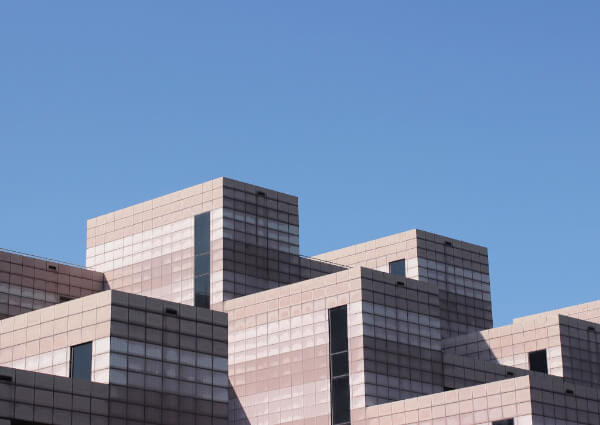

Ann Hamilton Tower by JENSEN Architects, Geyserville, California
Rapunzel’s tower has long been associated with entrapment and, of course, wishes for long golden locks. While charming and beautiful, the tall structure standing alone in the woods cannot be mistaken for anything but the home of a hermit who wishes to stay away from society.
In the Ann Hamilton Tower by JENSEN Architects, we see the sense of seclusion and detachment in its bare concrete façade and concealed fenestrations. But unlike the Disney version, this performance space features large double helix stairs that invited visitors to stand on and observe performers on the other end, allowing the two sides interact with one another (albeit at a distance).
Fa Family Home from Mulan
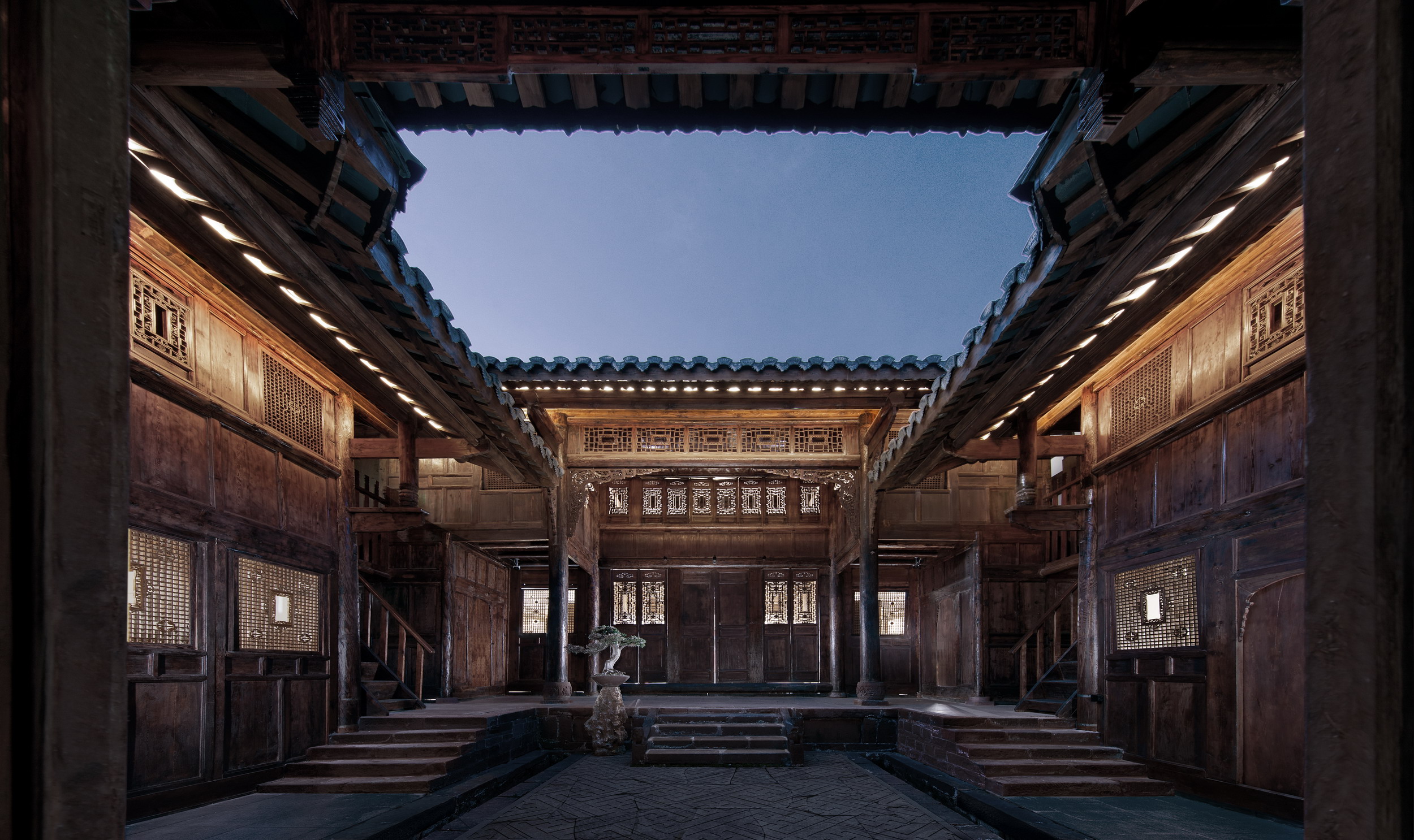

Qionghai Lake 17° General Hall Hotel by Beijing Puri Lighting Design Co.,LTD. Xichang, China
Mulan’s home in the 1998 animated film is laid out in a rectangular plot with a central courtyard. Just as in the layout, with its sloping roofs and red accents, the form of the building also looks to traditional Chinese residential architecture; it even comes with an adjoining stable and a serene garden with a river flowing through.
Qionghai Lake 17° General Hall Hotel in Xichang also stays true to its heritage by keeping intact the wooden structure and details that have existed on the site for over a century. Beijing Puri Lighting Design Co.,LTD. retrofitted the former residence of Liu Xiangzhi, an official in the Qing Dynasty, to create a dreamlike experience that is rooted in history. Warm white lights in the forms of dots, lines and planes are added throughout the complex to accentuate the architectural details of the hotel.
Elsa’s Castle from Frozen


IceHotel365: Dreamscape by Atmos Studio, Jukkasjärvi, Sweden
Whether it is due to its catchy tune or to the stunning graphics, Elsa singing “Let It Go” as she strides along a snow-capped mountain to build her icy castle is a scene that is not easily forgotten. Here, she magically produces a large castle with stunning pink and blue crystalline forms and details out of thin air.
What can’t be accomplished with magic in real life, Atmos Studio does with modern temperature control methods and actual ice. Icehotel 365 in Sweden is a space where visitors can experience art in the form of frozen water and experience living in ice suites. For this hotel, Atmos created an art suite complete with a swooping staircase and icy tentacles that partition spaces and create a mystical loft for sleeping.
Cottage of the Seven Dwarfs from Snow White and the Seven Dwarfs
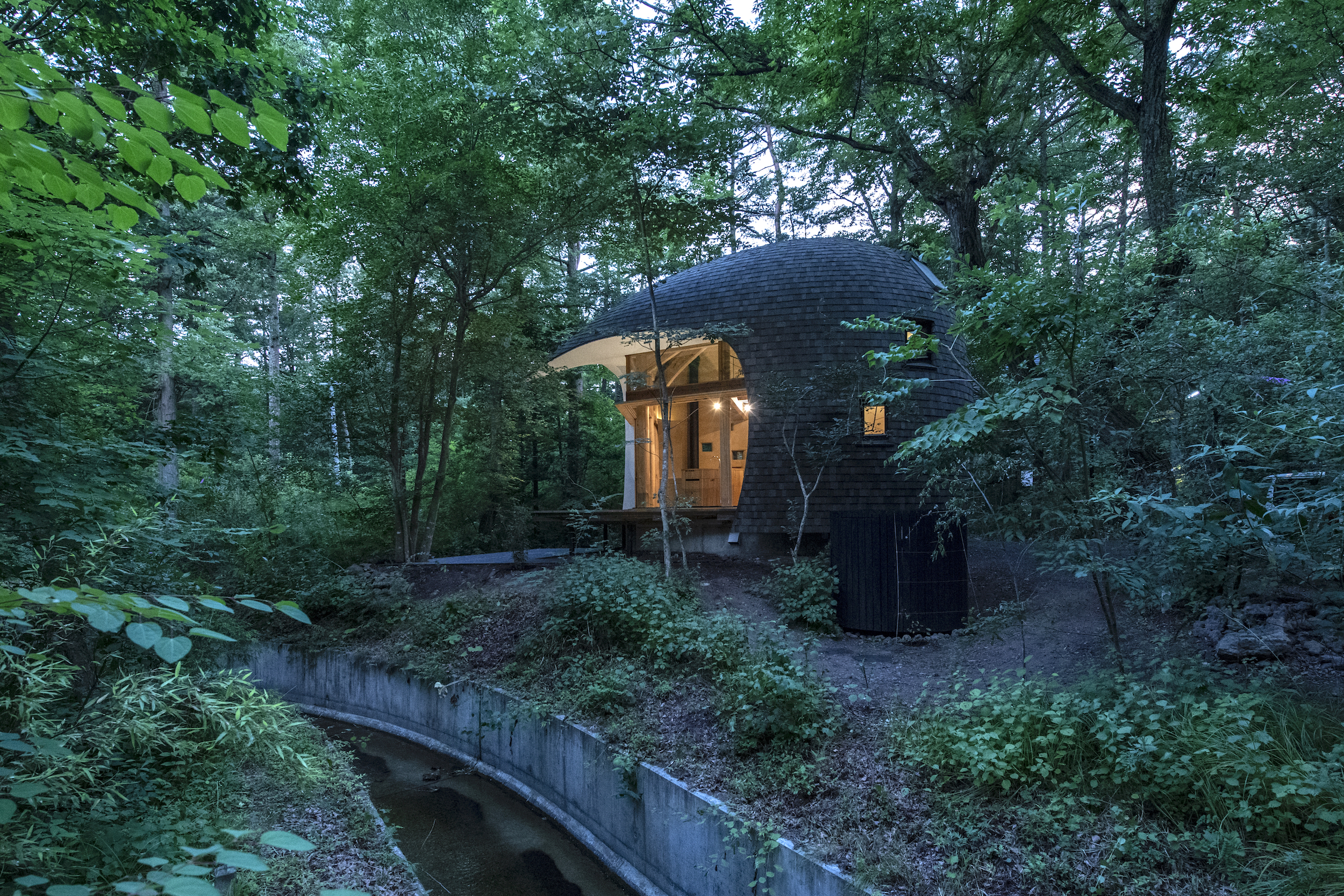
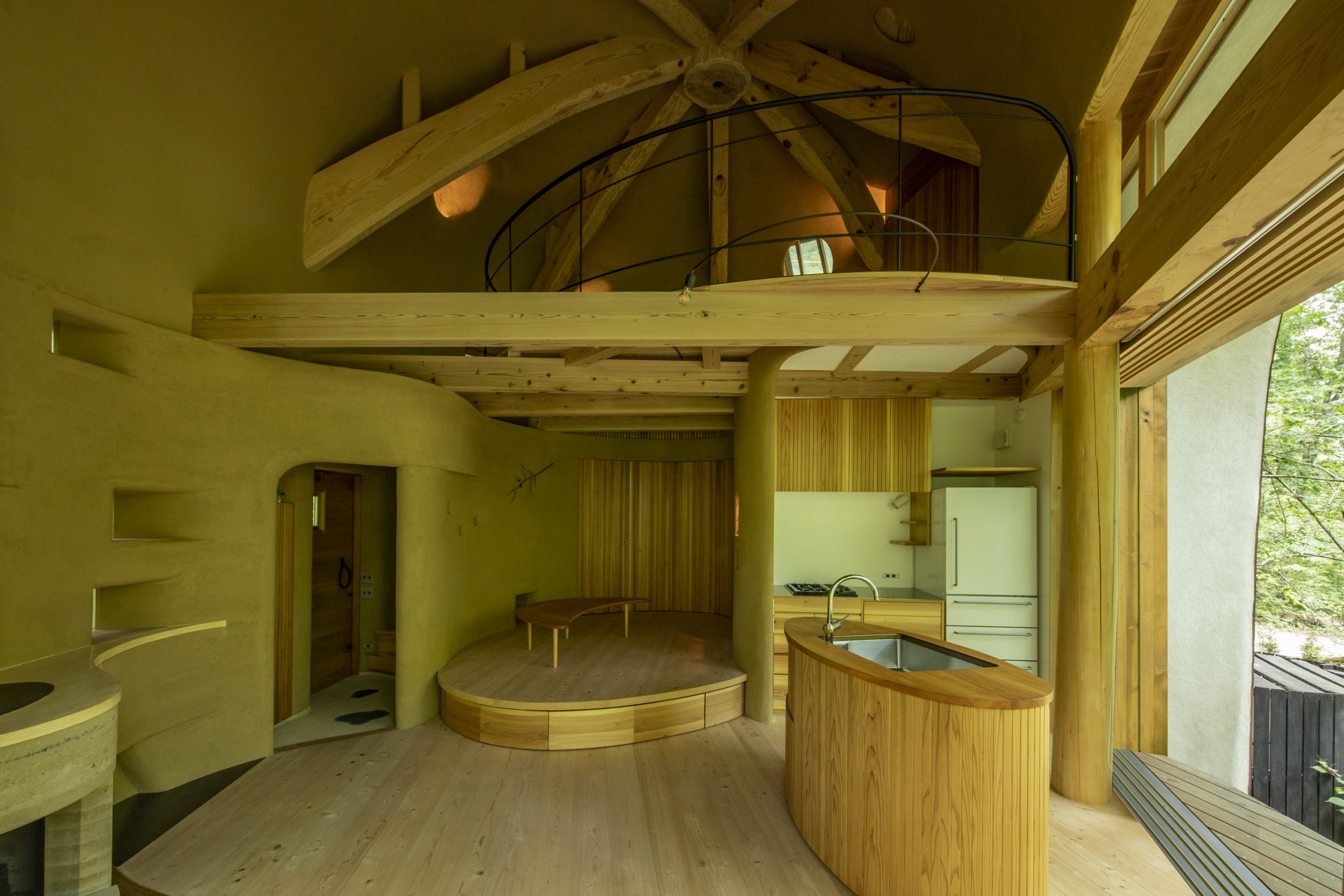
Shell House / The language of forest by Tono Mirai architects, Nagano Prefecture, Japan
When running away from her evil stepmother, Snow White found sanctuary in a quaint cottage in the woods. That forest home for the seven dwarfs was crafted using natural materials and rustic décor elements.
Likewise, in the Japanese Shell House, the language of forest provides the perfect hideout away from civilization. Its curved form partially encloses a kitchenette, island, dining area, bathroom and bedroom. Local wood, earth and manual construction methods all contribute to the project’s sustainability. A large opening on one side allows light enter the house, while the shingled cocoon on the other side helps it to blend with the surrounding forest.
The Beast’s Library from Beauty and the Beast

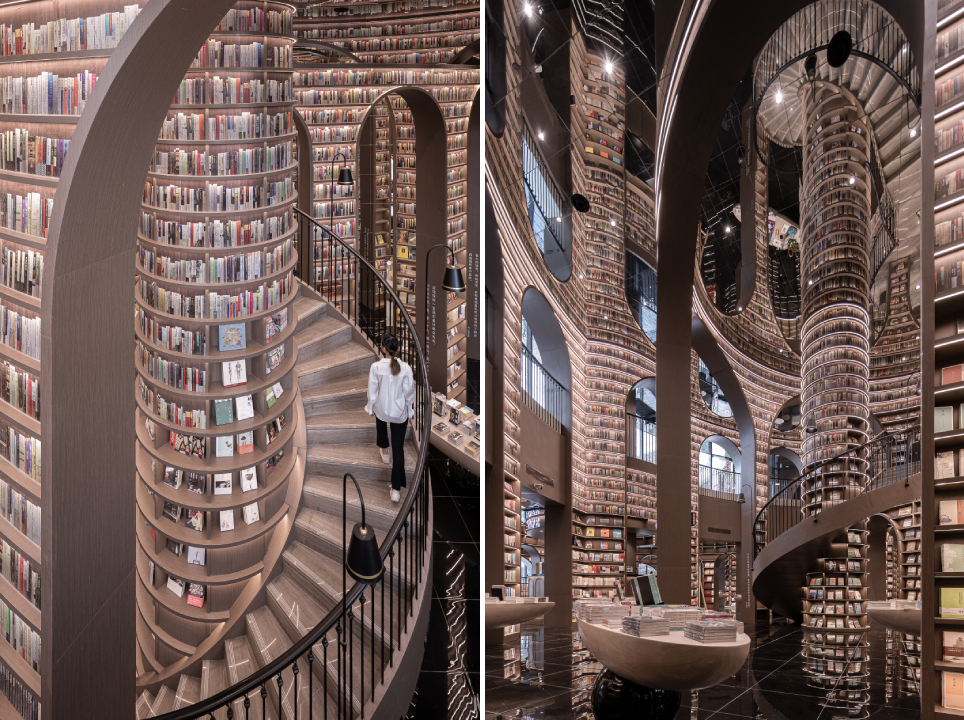
Dujiangyan Zhongshuge by X+LIVING, Dujiangyan, China
The Beast’s library has been a fantasy of many book lovers across the world. Endless stacks of books, grand spiral staircases and classic motifs and ornaments all hint at magical adventures beyond the pages of these books. A similar real-life example of a bibliophile’s paradise is the Dujiangyan Zhongshuge conceptualized by X+LIVING. Tall arches interconnect with curved shelves and dramatic staircases to create the illusion of a book-filled maze that is isolated from the outside world. The arches separate spaces and create designated pockets for different genres. Meanwhile, readers are invited to indulge their curiosity as they explore the space to find books that they love.
Pride Rock from The Lion King
View this post on Instagram
A post shared by Mufasa TheLionKing (@mufasafans)

DCIM100MEDIADJI_0195.JPG
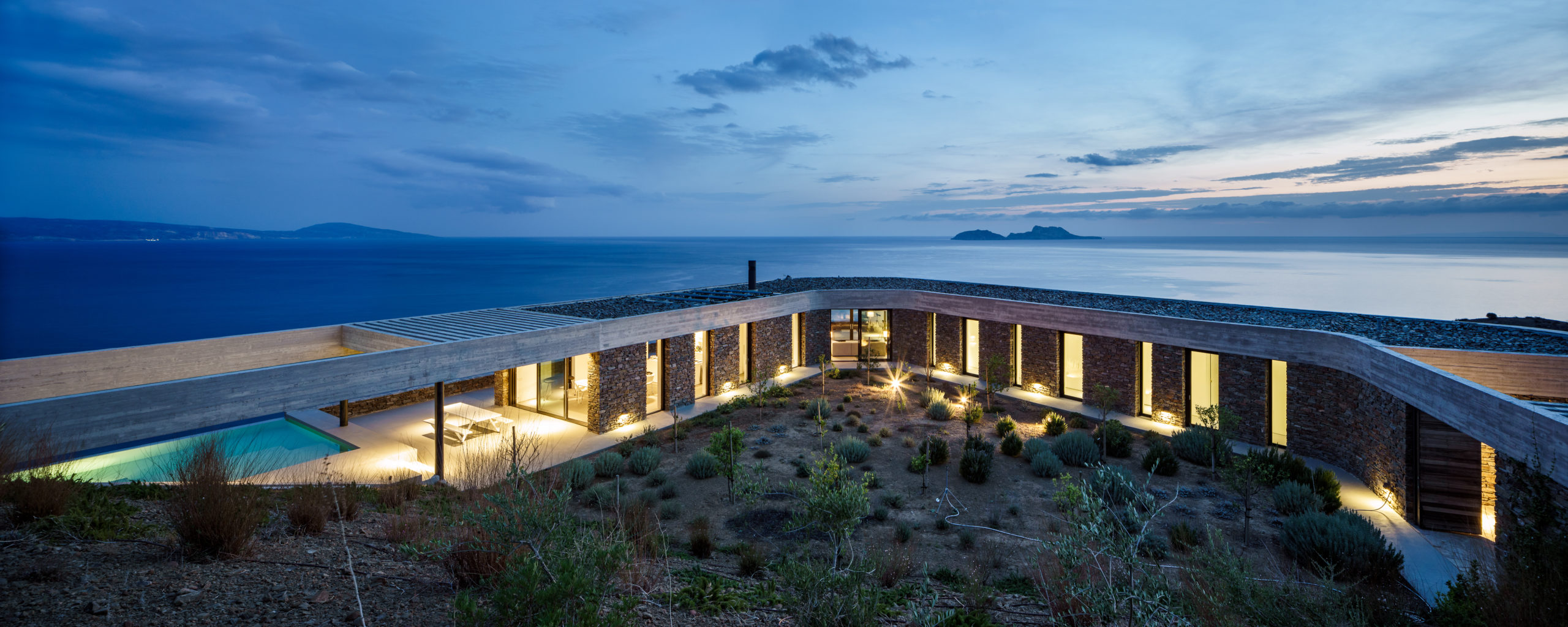
Ring House by Deca Architecture, Crete, Greece
When Simba was born, Rafiki — the mandrill who acts as advisor to the animal kingdom — trotted to the edge of the Pride Rock to introduce the future ruler to the animals of the Pride Lands. This massive rock formation creates a perch that overlooks the entire kingdom; the natural monument allows the ruling lions of the pride to observe the entirety of their land.
In a not dissimilar manner, Ring House by Deca Architecture stands alone on a hill and overlooks the endless sea on one side. The residence follows the natural contours of the hill and is a landscape preservation intervention. The house’s concrete beams provide shade while allowing natural ventilation. They are also fitted with solar panels to generate power. In addition to this, pillars covered in stone make up the external walls of the home.
Lightfoot House from Onward


The Mushroom – a wood house in the forest by ZJJZ Atelier, Jiangxi, China
In the movie Onward, Ian Lightfoot and his family live in a colorful mushroom-like house. Before their city evolved to what is a modern-day town, the creatures all lived in primitive mushroom houses in the mountains that featured wooden textures and hues.
ZJJZ Atelier’s The Mushroom is a practical and habitable version of those homes. It is a compact structure on stilts that is made of two volumes – a conical guest room with a spectacular view of the forest and a rectangular block that houses the bathing and storage facilities. There is also a loft in the cone that can be a secondary area for children. The selection of pinewood and concrete surfaces for the structure helps it become one with its surroundings, especially as these materials change tones with the weather.
King Triton’s Palace from The Little Mermaid
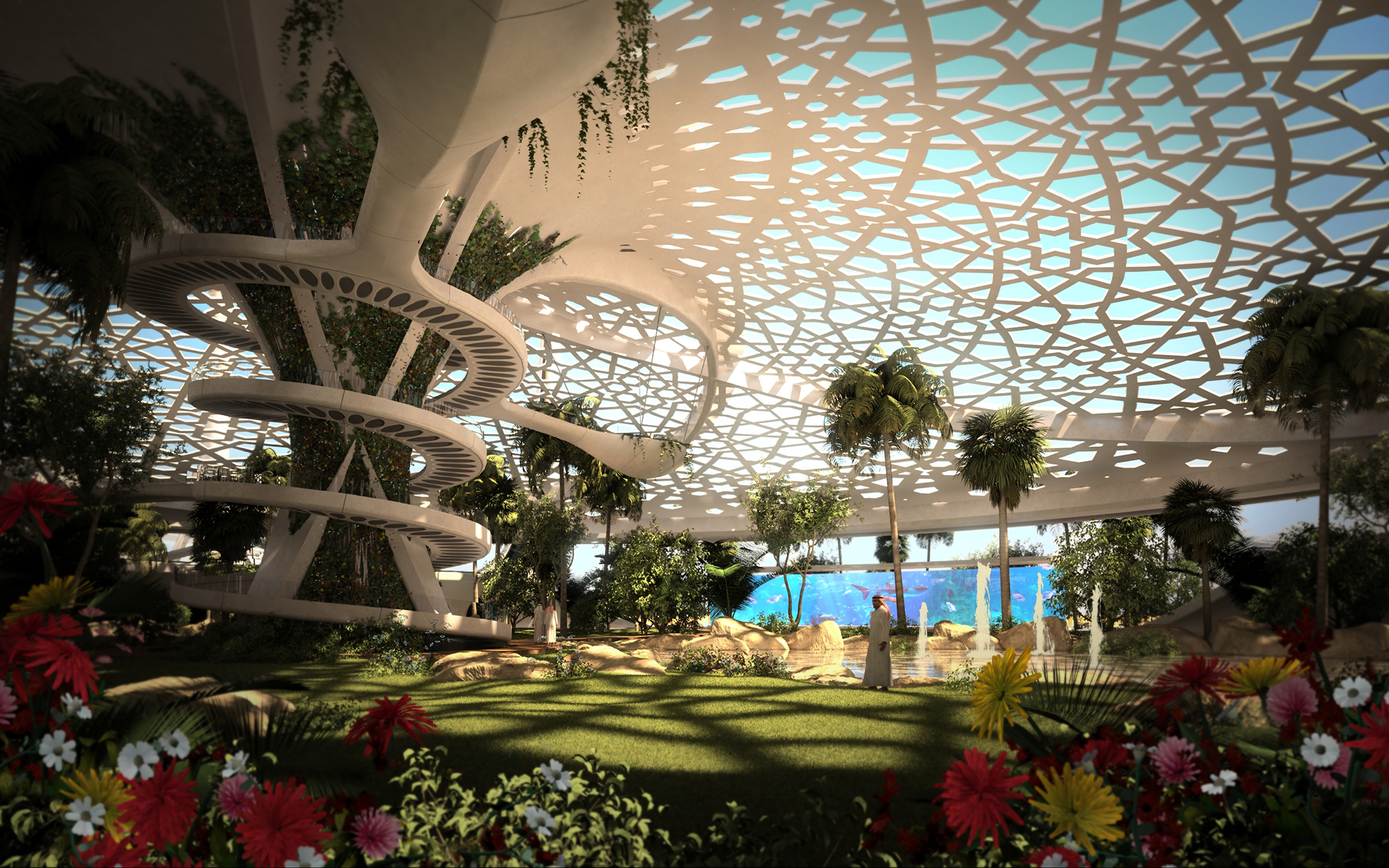
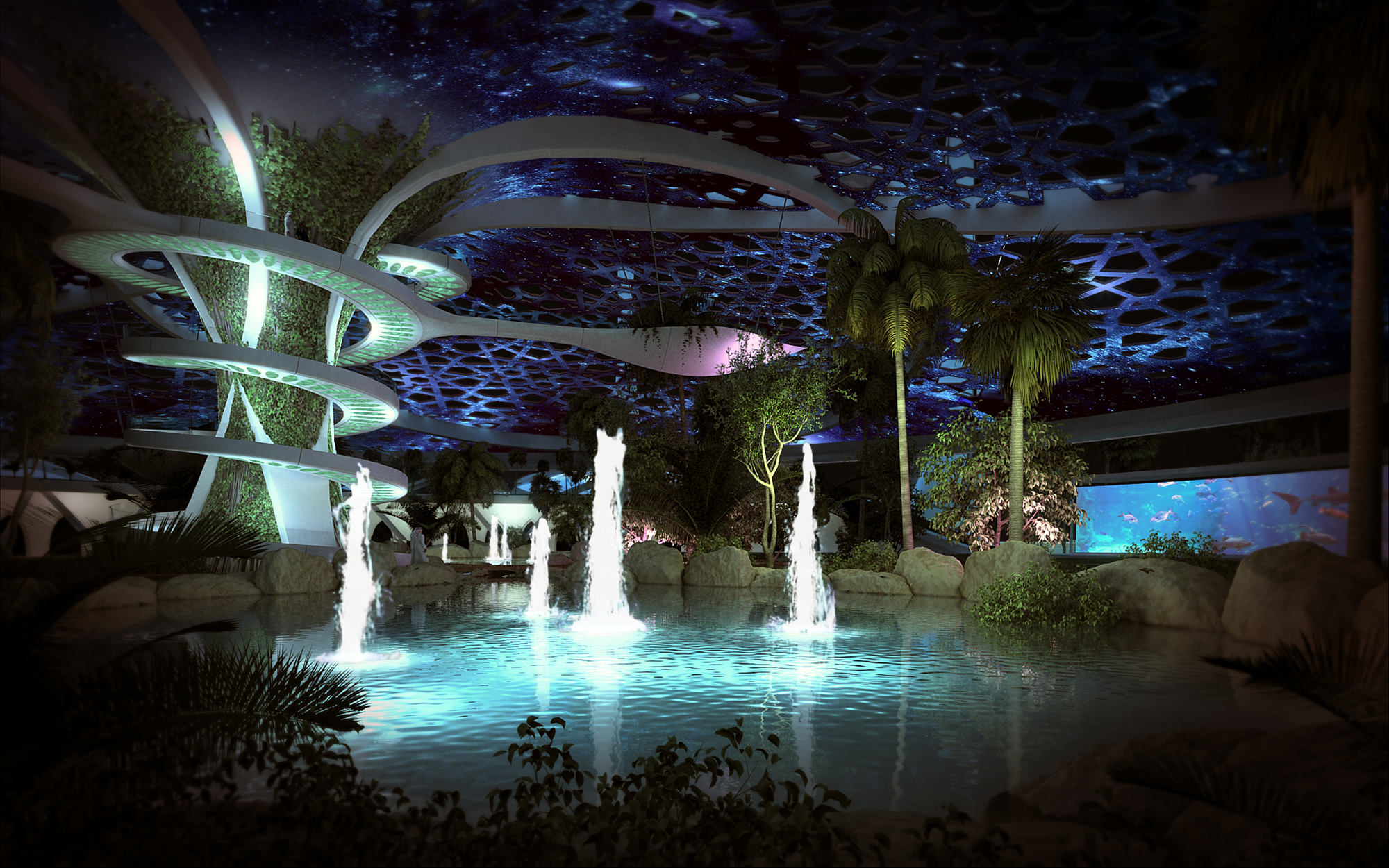
A Palace For Nature by sanzpont [arquitectura], Doha, Qatar
Ariel’s father’s palace in the animated movie was composed of imposing towers and organic forms. For the architectural enthusiasts watching the film, the underwater structure appears akin to the works of Antoni Gaudí.
sanzpont [arquitectura] created a similar fantasy above the ground as a competition entry; however, almost antithetical to the site of the underwater palace in the Little Mermaid, the Palace for Nature is imagined as a self-sustaining oasis in the middle of a desert. The design of the central dome is inspired by the native Sidra tree with a spiralling column anchoring it to the ground in the center. One can also see elements of Qatari architecture blended in with new-age parametric geometry. A micro-climate is created inside the structure with a mist irrigation system that uses water from the underground aquifer. Likewise, the outer skin of the dome and the roof contain photovoltaic panels to generate solar energy.
Sultan’s Palace from Aladdin
View this post on Instagram
A post shared by Aly Rogers (@aladdin_moments)
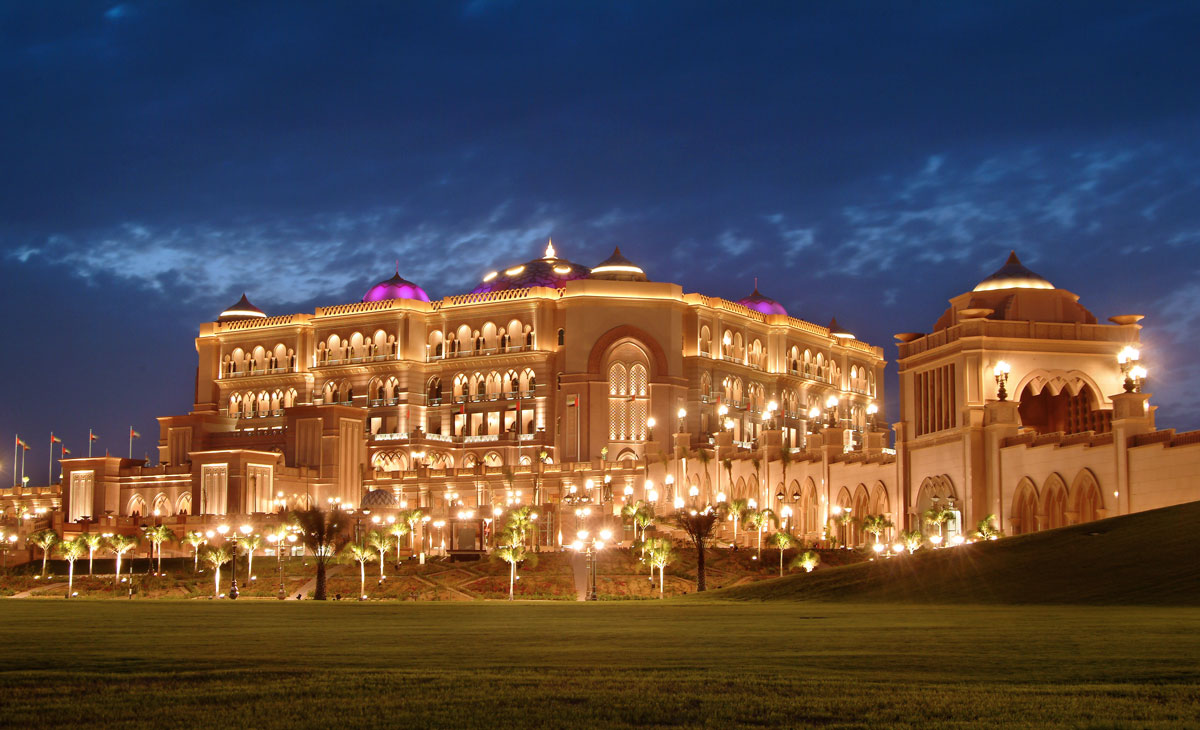
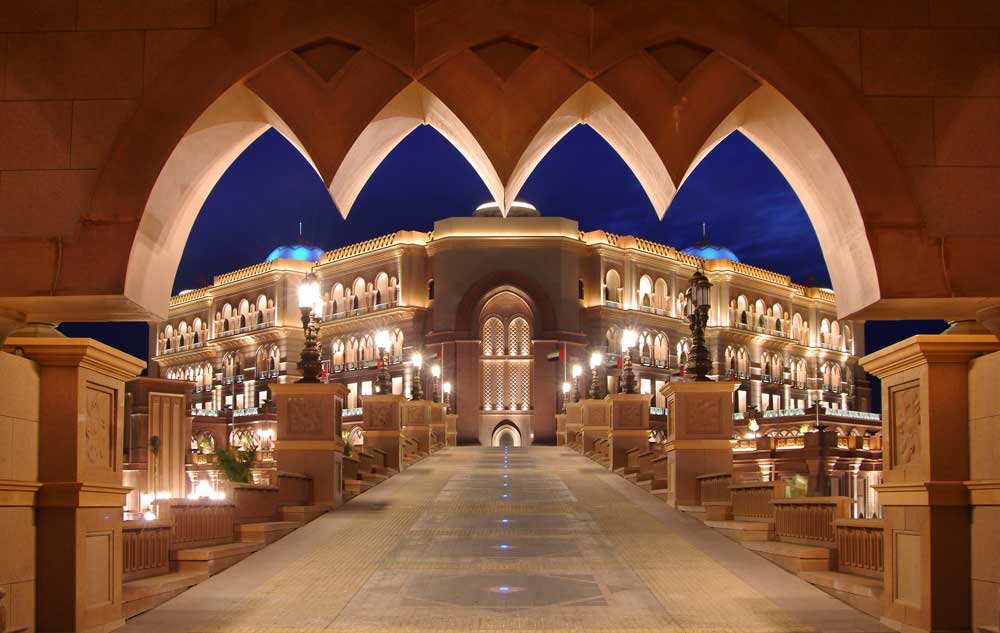
Emirates Palace by WATG and Wimberly Interiors, Abu Dhabi, United Arab Emirates
The home of Agrabah’s Sultan and his daughter Jasmine took inspiration from Indo-Islamic and Mughal architecture. Multiple minarets and exaggerated gilded domes speak of the wealth and prosperity of the Sultan.
The Emirates Palace makes a very similar statement of grandiosity. The brief was to create a large conference hotel that stayed true to the style and traditions of Abu Dhabi. Following those guidelines, the grand edifice is built using marble, granite and stone along with self-cleaning coated glass in balconies and spandrels. The firm also uses casting and etching methods to carve traditional motifs and patterns.
Architects: Want to have your project featured? Showcase your work through Architizer and sign up for our inspirational newsletter.
The post Animating Life: 9 Real-World Buildings Designed Like Disney Movie Sets appeared first on Journal.
Did you miss our previous article…
https://thrivingvancouver.com/?p=1058
Invisible Dwelling // onSITE
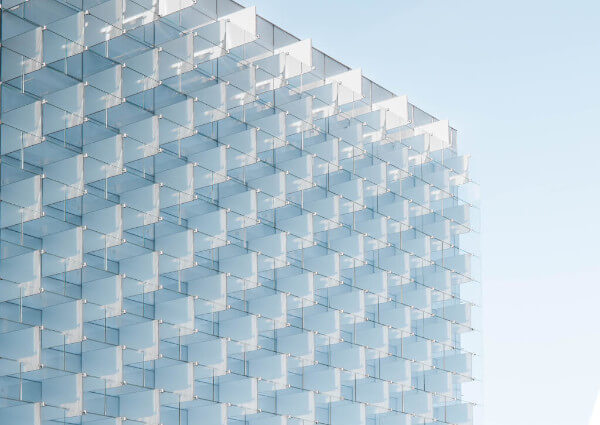
Project Status: ConceptSize: 0 sqft – 1000 sqft
Text description provided by the architects.
60 square meters is a small object but 15 square meters, 4 times, is an experience : a journey.The Journey begins at the entry to a tertiary wadi. In practical terms a head house provides shaded parking, fresh dates and other front-of-house services as well as back-of-house infrastructure. But in transcendental terms a head house creates a threshold : a preparation : a transformation.
© onSITE
Here, you leave all the trappings of contemporary life (cars, computers, cell phones, electric appliances, luggage, money, time pieces, etc). you shower, you change into an uniquely coutured kaftan and you ascend a wadi-wide monumental stair. This is not the entry to a building but rather the entry to a life experience.
© onSITE
The majesty of the landscape invites you to wander, to explore : the way that travelers through this place have for thousands of years. History reminds you that this is a place of shared cultural heritage. There is something universal here. As you explore you discover both sanctuary and prospect.
© onSITE
To know this place you cannot simply visit it, you must live it.In the words of Ibn Battuta “He who enters is lost; he who leaves is born.”The project resists the urge to build on the highest, the most beautiful, the most visible or the most interesting parts of the landscape and instead seeks to preserves the pristine natural beauty of those places.The site is not specific in its location but rather specific in its quality.
© onSITE
The tertiary wadis are higher and thus limited in the severity of flood danger but also, as local camel farmers demonstrate, their single or double entry points facilitate isolation and preservation. Built elements are nestled within the high ground in the inlets which feed the wadi. Here, they are above the floodway and back from rock fall.
© onSITE
These pockets are secluded places of extreme tranquility, sheltered from the wind, and silenced by the surrounding cliff walls. Here, 5 single room, single aperture instruments take place. Each born of the materials of the place. Each a rough, weathered geolith – armored from the harsh desert – shielding a carefully oriented and tuned, immersive sensual experience of a primary terrestrial element: earth, water, fire, void and sky.
The spaces are not “programmed” in the conventional contemporary sense, neither are they furnished nor decorated.
© onSITE
Rather they are “programmable”. This is to say that while the fire room is in no way a “kitchen” all the resources for food storage and preparation reside in this space. Formally, the fire room is the tallest of the elements it is an inhabitable chimney. You enter it through a tall, narrow slot, guided by a slice of light washing a wall of meticulously hand textured earthen plaster.
© onSITE
The texture both catches the light of the flickering fire and holds the aroma of charred timber. The crackling kindling is enhanced by the dense mineral surfaces. Here, the intentional suppression of the expected heightens your consciousness of the subtle, of the fundamental : this is luxury.In this arid place, water is among the most precious of commodities.
© onSITE
To survive here literally requires the mastery of hydrology. And so the vestiges cultures who have thrived on this land include brilliant examples of hydraulic infrastructure. Harvesting water in the generic sense is insufficient. The water room is thus calibrated to this equilibrium: The saltwater bath is therapeutic, the steamy hot water shower is sanitary, the cold fresh water quenches thirst, the gray water evacuates waste and the black water nourishes plantings.
Like descending into a well, the entry to the water room is a long shallow stair.
© onSITE
The entry corridor leads you onto a promontory surrounded by a pool in the center of a dome, under a single oculus. You shower in an ether of steam and light. You soak in a suspension of water and salts.Here, the intentional augmentation of the arbitrary enriches your experience of the habitual, of the necessary : this is luxury.The Nabateen were expert stone masons.
© onSITE
Their habitations for eternity : their tombs for the dead, were carved into the live rock. Their temporal habitations : their villages for the living, were erected from rubble masonry. This experience aspires to be both : timeless and light on the land. It’s structural and constructive systems emerge directly from material and constructive cultures of the place while simultaneously writing the next chapter of this shared language : digitally carved complex stone geometries, simply assembled with traditional earth mortar masonry technologies.
The earth room is entered obliquely from a bent corridor.
© onSITE
The space is initially withheld from your view. As you round the corner you remain on-grade with the adjacent land and find yourself oriented toward a naturally placed boulder. You are offered a view but the focal length is short and aperture is low. You are encouraged to approach the floor.
© onSITE
From this vantage you appreciate a textile ground-scape. While hand rendered earthen plaster has created the atmosphere, now felted wool fiber delivers intimacy. You kneel, you sit, you lay.
Here, your visual perceptions are intentionally limited to provoke your tactile perceptions, to draw you close to the earth, to rest your body : this is luxury.
At a time when globalization has drawn many people to urban centers and has diluted experience to ephemeral images – iconic non-experiences which can be captured and shared on social media, which belong to everywhere and nowhere and which fade as quickly as they rise all proport authenticity.
© onSITE
This place is about focus and memory.You enter the void room by climbing a stair. Your vantage is high, your view is long. The room is dead silent. A felted textile envelope, like a Bedouin tent absorbs visual and auditable noise. You observe the landscape but you are removed from the experience of it.
© onSITE
A central stone monolith is a place to sit, a place to write, a place to eat, a place to read.Here, the emptiness is intentional, the abstraction is real, this place is a blank canvas : this is luxury.The sky room is a boundless observatory on the stone ridge. It is accessed first by a stair carved directly into the live rock face following the natural contours, than through a vault-like enclosure and up a spiral stair to a honed stone platform.
By the time you arrive the land is becoming dark and the sky is vibrant. The only tool you need is the telescope that you discover on the axis of the stair. As you situate yourself in the cosmos night turns into dawn.Here time bends and disappears, infinity becomes measurable : this is luxury.A great teacher once said that “architecture is the marriage of art and engineering”.
From their intricately carved monolithic necropolis freed from the live sandstone outcrops to their patiently hand fashioned rubble and clay metropolis born of the earth, few civilizations -ancient or contemporary- have demonstrated this foundational relationship between creativity and ingenuity more fully than the Nabatean. To this end, the collaborative underpinning of our team is a mutual reverence for disciplinary expertise.
This is to say that we have assembled a team of architects, material scientists, landscape designers, exhibition designers, an earth plaster sculptor and a textile artist, all of whom offer specific disciplinary expertise but all with shared professional experiences, shared values and a shared investment in conceiving and realizing a coherent collaborative work of architecture: a work of engineering to which the art is indissociable and a work of art to which the engineering is indissociable.
The ambition of our team is that cultural project is equally as important as the architectural project.
This is to say that the collaborative making of the architecture is as important as the physical manifestation. As with all of our projects, a series of exhibitions, publications and training workshops will ensure that the material and human resources developed for the project transition into sustainable contributions to local culture and economy.
With the long history of domestication of sheep, goats, and camels in the Arabian Peninsula, these animals’ fibers have been used in producing various textiles and materials for clothing and shelter in the region.
An abundant natural resource, animal fibers are highly suitable for the climate in both hot and cold temperatures. Many elements of the traditional Bedouin home such as the exterior and interior walls, floors, roofs, and various furniture (mattresses, cushions, and rugs) are some form of a textile, woven using a simple floor loom.
This Bedouin loom has remained a primitive tool, which can produce very intricate weavings. The essence of this loom is preserved while exploring the evolution of this simple technology to create complex textiles which can become three-dimensional and spatial. The textile becomes ‘inhabitable space’. Sheep’s wool is an abundant and versatile fiber.
It can be used in various forms, from loose fiber for stuffing mattresses and blankets, to spun yarn for weaving into various textiles for garments, interiors, and exteriors. Wool can also be ‘molded’ through felting, which transforms the loose fibers into textiles and objects. Felting is synonymous with ancient Nabatean building processes where mountains are carved to create spaces within, producing loose rubble, which is then assembled into built structures for living.
The loose wool is sheared off the sheep’s body and then reassembled into two and three-dimensional forms – ‘inhabitable works of Art’. To be invisible means to be immersed the history of a place, to be in harmony with the spirit of a place. To be invisible means to resist the global and the virtual in favor of the local and the real, to be built from local materials rather than from imported products, to be simultaneously high-tech and low-tech, to be experiential rather than iconic, to improve rather than to degrade with age, and to enrich rather than to exploit culture.
To be invisible means to be monumentally modest: an architecture confident enough in the power of its experience to fade quietly into its setting. This is luxury..
The post Invisible Dwelling // onSITE appeared first on Journal.
Did you miss our previous article…
https://thrivingvancouver.com/?p=1055